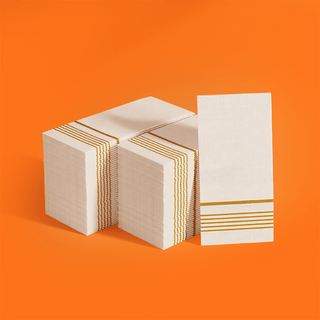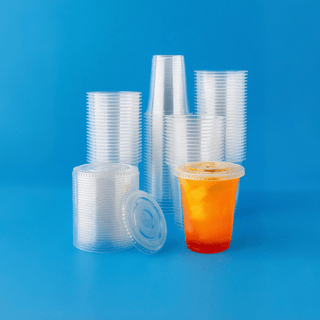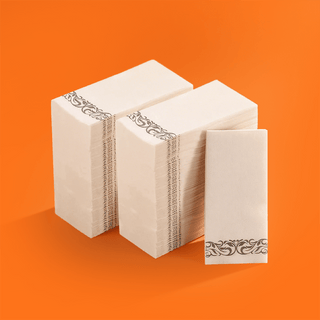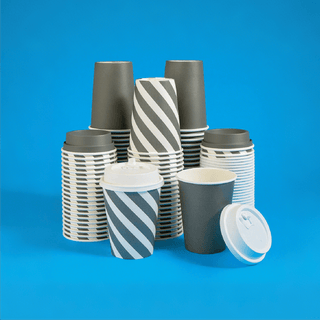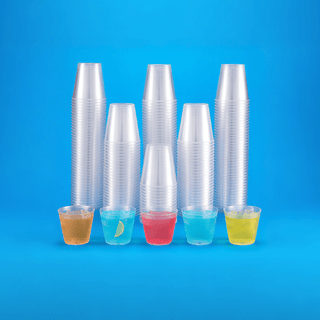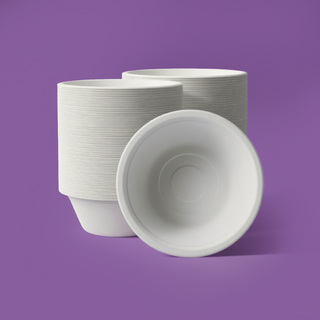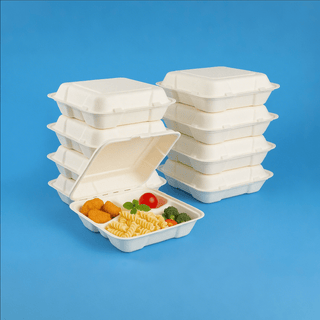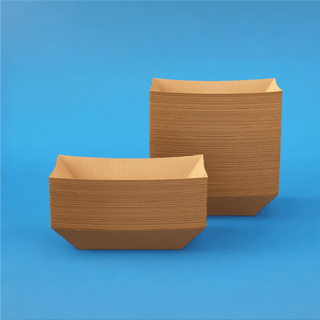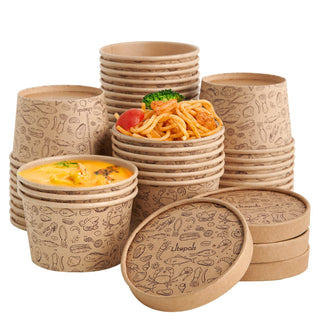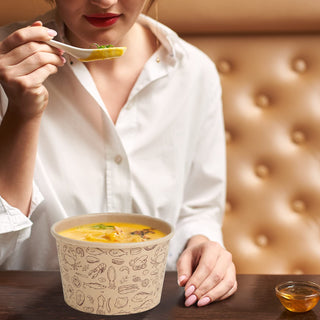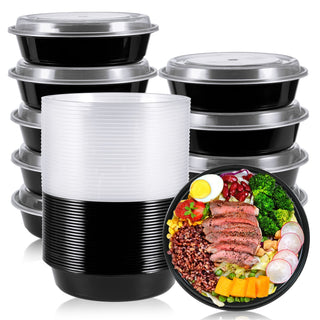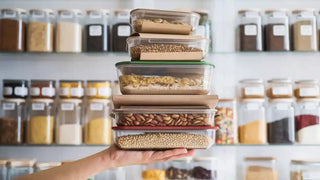
2025 Guide to Bulk Eco Friendly Food Packaging
You want the best bulk eco friendly food packaging for your business in 2025. Sustainable packaging isn’t just a trend—it’s a must. Many countries ban single-use plastics, so you need eco friendly food packaging to stay compliant and win customer trust. People expect environmentally friendly packaging that matches their values. Jolly Chef stands out as a top choice for businesses, offering reliable, stylish, and environmentally friendly options. You’ll see packaging types like compostable, biodegradable, and recyclable—each with its own benefits for your business.
Key Takeaways
-
Choose eco friendly packaging like compostable, biodegradable, or recyclable types to meet customer expectations and stay ahead of regulations.
-
Compostable packaging breaks down safely in compost facilities and works well for events and bulk orders, especially products like Jolly Chef’s sugarcane plates.
-
Biodegradable packaging decomposes naturally and helps reduce waste quickly, making it a good choice for fast turnover businesses.
-
Recyclable packaging offers cost-effective, durable options that fit many food types and support recycling efforts when disposed of properly.
-
Clear labeling and customer education on disposal improve recycling and composting rates, building trust and supporting your brand’s eco-friendly image.
Eco Friendly Food Packaging Options
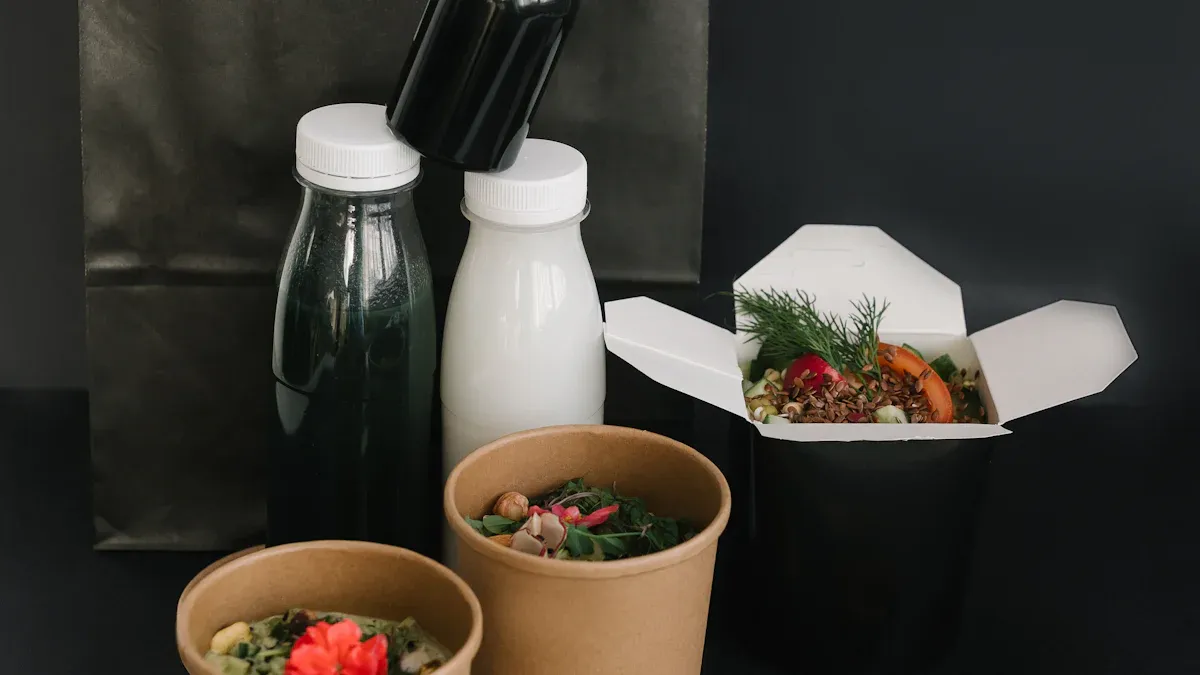
Overview
You have more choices than ever when it comes to eco friendly food packaging in 2025. Businesses like yours want packaging options that are good for the planet, easy to use, and reliable for bulk orders. The most popular types include compostable packaging, biodegradable packaging, and recyclable packaging. Each type brings something unique to the table.
Here’s a quick look at the top choices you’ll see this year:
|
Packaging Type |
Description |
Representative Companies / Examples |
|---|---|---|
|
Paper-based packaging |
Paperboard, molded fiber trays, bowls, drink lids; recyclable and compostable |
Smurfit WestRock, International Paper, Huhtamaki, Graphic Packaging |
|
Compostable molded fiber products |
Trays, bowls, coffee cups that break down in composting environments |
Be Green Packaging, Huhtamaki |
|
Recyclable and biodegradable films |
Flexible films designed for recyclability and biodegradability |
Constantia Flexibles, Folene Packaging |
|
Plant-based and algae-based coatings |
Coatings that replace plastic barriers with renewable, biodegradable materials |
NatureWorks, Constantia Flexibles |
|
Flexible laminate films (mono-material) |
Single-material laminates that simplify recycling |
Constantia Flexibles |
|
Innovative materials |
Seed-embedded paper, wool-based cushioning as plastic alternatives |
Botanical PaperWorks, Woola |
|
Protective packaging alternatives |
Biodegradable air pillows, compostable packing peanuts, fiber cushions |
Air Sea Containers, Puffy Stuff, Sealed Air Corporation |
|
Reusable and smart packaging |
Custom folding cartons, rigid boxes with recycled or plant-based materials, interactive features |
PakFactory |
You might notice that compostable packaging, especially molded fiber products, is gaining traction. Many supermarkets now use compostable trays made from sugarcane fiber for fresh produce and meat. These trays can go straight into home or industrial compost, helping you cut down on landfill waste. Packaging made from agricultural waste, like husks or pulp, also supports a circular economy by turning byproducts into something useful.
Jolly Chef stands out as a trusted brand in the eco friendly tableware market. You can count on their compostable plates and bowls for events, catering, or daily business needs. Their products are made from 100% sugar cane pulp, so you get both strength and sustainability. Jolly Chef’s US-based warehouse means you get fast delivery and reliable service, which is a big plus for bulk orders.
Pros and Cons
Every packaging option has its strengths and challenges. You want to make the best choice for your business, so let’s break down the main pros and cons of each type:
|
Packaging Type |
Advantages |
Disadvantages |
|---|---|---|
|
Compostable |
- Breaks down reliably in composting conditions |
- Needs proper composting facilities |
|
Biodegradable |
- Decomposes easily by microorganisms |
- Must decompose within a short period to be effective |
|
Recyclable |
- Durable and affordable |
- Depends on recycling infrastructure |
Tip: Clear labeling on your packaging helps customers dispose of it correctly. This boosts recycling rates and builds trust with your audience.
Compostable packaging, like Jolly Chef’s sugarcane plates, offers a reliable way to reduce waste. You can use them for hot or cold foods, and they hold up well at big events. Biodegradable packaging uses materials that break down into water, carbon dioxide, and biomass. These materials help you lower your carbon footprint, but you need to make sure they decompose quickly enough to be truly effective. Recyclable packaging works best when you have access to good recycling facilities. Using recycled content, like post-consumer recycled paperboard, helps you cut down on virgin materials and supports a continuous recycling cycle.
You want eco-friendly options that fit your business model. Jolly Chef’s compostable packaging gives you a practical, cost-effective solution for bulk orders. Their products help you meet customer expectations and stay ahead of regulatory trends, all while making your supply chain more sustainable.
Why Choose Eco Friendly Packaging
Business Benefits
Choosing eco friendly packaging gives your business a real edge. You show customers that you care about the planet and their values. When you use environmentally friendly packaging, you make a strong first impression. People notice your commitment and feel good about buying from you.
-
You build trust and loyalty. Customers see your brand as responsible and forward-thinking.
-
Your packaging tells a story. You can share how your products help the environment, which connects with more people.
-
You stand out in a crowded market. Many businesses still use old packaging. You show you are different.
-
You avoid fines and stay ahead of new rules. Eco friendly packaging helps you meet regulations and future-proof your business.
-
You create lasting relationships. Customers come back and recommend you to others.
Jolly Chef’s compostable plates and bowls offer practical solutions for events, catering, and bulk orders. You get durable products that look great and support your brand’s reputation. Fast shipping from a US-based warehouse means you never worry about supply chain delays.
Tip: Eco friendly packaging can boost your marketing. Share your story on social media and packaging labels to attract more customers.
Regulatory Trends
Regulations around food packaging keep changing. You need to stay updated to avoid problems and keep your business running smoothly. Here’s a quick look at what’s happening in major markets:
|
Region |
Regulatory Trends |
Impact on Bulk Eco-Friendly Food Packaging |
|---|---|---|
|
Europe |
EU Green Deal, Plastics Directive, strict food safety laws |
Pushes recycling, carbon footprint disclosure, and adoption of sustainable materials |
|
India |
Plastic Waste Management Rules, National Packaging Innovation Challenge |
Drives innovation and eco friendly solutions, supports startups |
|
United States |
FDA guidelines, Food Safety Modernization Act |
Ensures food safety, supports use of environmentally friendly materials |
Governments want businesses to use packaging that is safe and environmentally friendly. New rules in Europe, India, and the US encourage companies to switch to compostable and biodegradable options. The global market for eco friendly packaging keeps growing, driven by consumer demand and strict laws. You protect your business and build trust when you follow these trends.
Compostable Packaging
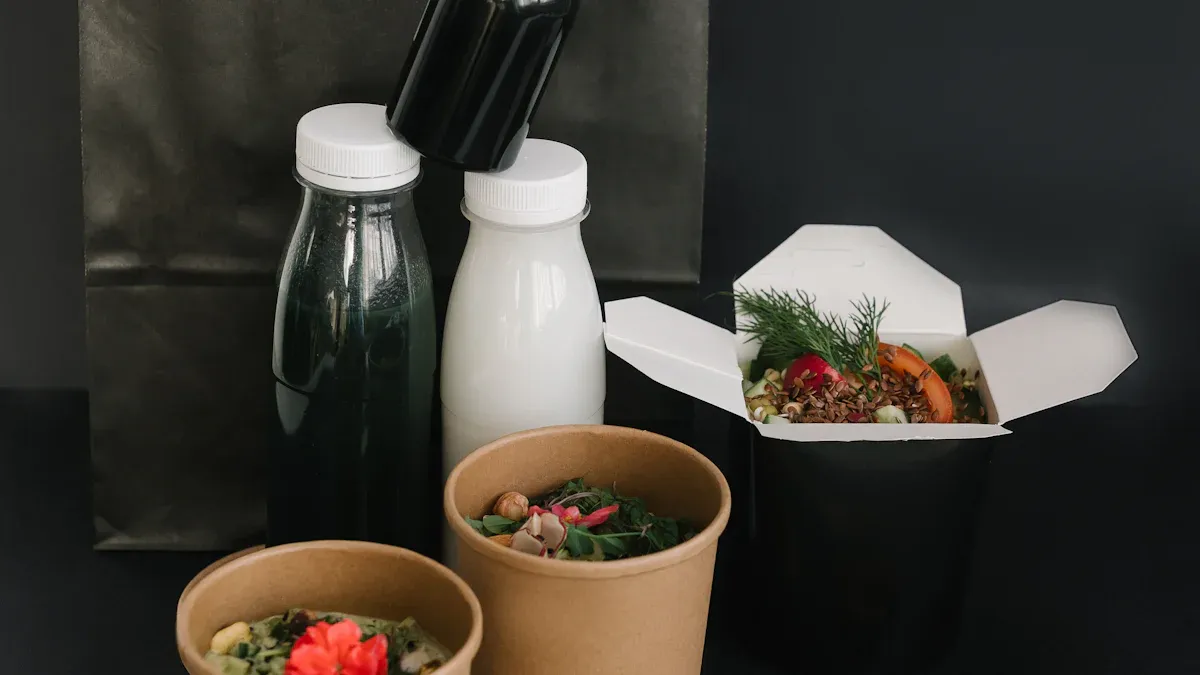
What Is Compostable Packaging
You want packaging that breaks down quickly and safely. Compostable packaging does just that. It uses compostable materials that turn into carbon dioxide, water, and biomass when processed in industrial composting facilities. This process meets strict safety standards, so the compost left behind helps soil and plants grow. Compostable packaging stands out because you can collect it with organic waste and compost it without harming the environment. You help reduce landfill and incineration waste, making your business part of the solution. Clear certification and labeling matter, since only some compostable materials work in home composting.
Did you know? Compostable packaging improves waste collection and creates valuable soil improvers. Customers appreciate seeing your commitment to eco-friendly choices.
Jolly Chef White Round Compostable Plates
If you need bulk compostable packaging for events, catering, or daily service, Jolly Chef’s White Round Compostable Plates are a smart pick. These plates use 100% sugar cane pulp, a renewable resource. You get heavy-duty plates that resist heat, cuts, and leaks. You can serve hot BBQ, cold salads, or desserts without worry. The plates come in two sizes—9-inch and 10-inch—so you can match them to your menu. You save time on cleanup and show your guests you care about the planet.
Jolly Chef ships from a US-based warehouse, so you get fast delivery and reliable supply. You avoid delays and keep your business running smoothly. Bulk packs make ordering easy and cost-effective, which is perfect for B2B clients who need large quantities.
|
Feature |
Benefit for Your Business |
|---|---|
|
Sugar cane pulp |
Renewable, compostable materials |
|
Heavy-duty design |
Handles hot and cold foods, no leaks |
|
Bulk options |
Cost savings, easy procurement |
|
Fast shipping |
Reliable supply chain, no delays |
Pros and Cons
You want to know if compostable packaging fits your needs. Here’s a quick look:
Pros:
-
Breaks down into safe compost, helping the environment
-
Made from renewable compostable materials
-
Supports your brand’s eco-friendly image
-
Meets regulations for food safety and sustainability
-
Bulk options save money and simplify ordering
Cons:
-
Needs access to industrial composting facilities for best results
Tip: Use compostable packaging at large events, restaurants, or catering services. You show responsibility and make cleanup easy.
Biodegradable Packaging
What Is Biodegradable Packaging
You might wonder what makes biodegradable packaging different from compostable packaging. Both types break down over time, but biodegradable packaging simply needs natural elements like air, water, and microbes to decompose. It does not always require special composting facilities. Compostable packaging, on the other hand, must meet strict standards and usually needs an industrial composting site to break down fully.
Biodegradable packaging uses materials like bagasse (sugarcane pulp) or cornstarch. These materials break down within a year, making them a smart choice for businesses that want to reduce waste quickly. You see these products everywhere in bulk food service—think meat trays, produce trays, and deli containers. They work well for restaurants, food trucks, grocery stores, and catering companies that need reliable, eco-friendly options for large orders.
Here’s a quick look at common types of biodegradable packaging in bulk food service:
|
Packaging Type |
Material Source |
Common Use Case |
|---|---|---|
|
Meat trays |
Bagasse (sugarcane) |
Bulk meat packaging |
|
Produce trays |
Bagasse (sugarcane) |
Bulk produce packaging |
|
Meat trays |
Cornstarch |
Bulk meat packaging |
|
Produce trays |
Cornstarch |
Bulk produce packaging |
|
Containers (clamshell) |
Sugarcane (bagasse) |
Foodservice containers |
|
Deli containers |
Bagasse/cornstarch |
Bulk deli food packaging |
Pros and Cons
Biodegradable packaging brings real value to your business, especially when you buy in bulk. Here are some key benefits:
-
You help reduce pollution and support natural resource conservation.
-
You can attract more customers who care about the environment. Studies show that 73% of people are willing to pay more for sustainable packaging.
-
You gain a competitive edge. Many customers prefer restaurants and caterers that use eco-friendly packaging.
-
You lower your risk of fines and keep up with changing regulations.
But there are also some challenges to consider:
|
Aspect |
Benefits |
Drawbacks |
|---|---|---|
|
Environmental Impact |
Reduces pollution and waste |
Production may use more energy and water |
|
Economic Factors |
Boosts market share and loyalty |
Higher production costs |
|
Manufacturing Complexity |
— |
Needs special equipment and training |
|
Regulatory Environment |
— |
Rules vary by region |
|
Consumer Awareness & Demand |
Drives adoption |
Some people may not understand how to dispose of it properly |
|
Business Risks of Non-Adoption |
— |
Financial and reputational risks if you do not switch |
Note: If you want to keep your business ahead, switching to biodegradable packaging can help you meet customer expectations and avoid regulatory headaches. You also show your commitment to a cleaner planet, which builds trust and loyalty.
Recyclable Packaging
What Is Recyclable Packaging
You want packaging that keeps things simple for your business and your customers. Recyclable packaging means you use materials that can go back into the recycling stream after use. This helps you cut down on waste and makes your operation more efficient. In 2025, you see a lot of bulk food packaging made from sturdy paperboard, reusable plastics, and even compostable bagasse for certain foods.
Here’s a quick table to show you the most common materials for bulk food packaging:
|
Material Type |
Description |
Key Features |
Suitability for Bulk Food Packaging |
|---|---|---|---|
|
Recyclable Paperboard (Gable Boxes) |
Sturdy, customizable, easy to brand |
Recyclable, strong, easy to carry |
Great for takeout, delivery, and bulk orders |
|
Compostable Bagasse Takeout Boxes |
Made from sugarcane byproduct, breaks down quickly |
Compostable, microwave-safe, eco-friendly |
Good for hot and cold foods |
|
Reusable Microwavable Plastic Containers |
Durable, food-grade, designed for repeated use |
Reusable, dishwasher and microwave safe |
Practical for meal prep and bulk orders |
You want packaging that fits your business model. Recyclable paperboard boxes work well for takeout and delivery. Reusable plastic containers are perfect for meal prep or catering. Compostable bagasse boxes give you an eco-friendly option for hot and cold foods.
Tip: Choose packaging that matches your menu and your customers’ needs. This helps you save money and keeps your supply chain running smoothly.
Pros and Cons
You need to know what works best for your business. Let’s look at the main pros and cons of different recyclable packaging materials, especially PLA and PET plastics, which are common in bulk food service.
|
Aspect |
PLA (Polylactic Acid) |
PET (Polyethylene Terephthalate) |
|---|---|---|
|
Source |
Made from corn starch or sugarcane |
Petroleum-based |
|
Environmental Impact |
Biodegradable in commercial composting, less fossil fuel use |
Highly recyclable, supports circular economy |
|
Temperature Resistance |
Up to 110°F, not for hot foods |
Up to 140°F or higher, good for hot foods |
|
Durability |
Less durable, can crack |
Strong, handles transport well |
|
Cost |
Usually more expensive |
Cost-effective for bulk orders |
|
Practical Limits |
Needs industrial composting, not for hot foods |
Needs proper recycling, must be clean to recycle |
|
Aesthetic |
Clear, good for food visibility |
Even clearer, makes food look appealing |
You want to pick the right material for your food type and business needs. PET containers are strong and handle hot foods, making them a smart choice for catering and delivery. PLA works for cold foods and appeals to customers who want plant-based options. Both types help you manage costs and keep your supply chain efficient.
Note: Always check your local recycling rules. This helps you and your customers dispose of packaging the right way.
Comparison Table
Compostable vs Biodegradable vs Recyclable
You want to make the right choice for your business. Here’s a quick side-by-side comparison to help you decide which packaging type fits your needs best. This table gives you a clear look at the main features, business value, and practical use for each option.
|
Feature |
Compostable Packaging |
Biodegradable Packaging |
Recyclable Packaging |
|---|---|---|---|
|
Breakdown Process |
Turns into compost in specific facilities |
Breaks down naturally over time |
Can be processed into new products |
|
Main Materials |
Sugar cane pulp, cornstarch, bamboo |
Bagasse, cornstarch, plant fibers |
Paperboard, PET, some plastics |
|
Disposal Method |
Compost bin or industrial composting |
Regular trash or compost bin |
Recycling bin |
|
Time to Decompose |
Weeks to months (with right conditions) |
Months to years |
Varies (depends on recycling system) |
|
Business Value |
Shows strong eco commitment, meets strict regulations, ideal for food service |
Flexible disposal, quick waste reduction, good for fast turnover |
Familiar to customers, easy to source in bulk |
|
Cost-Effectiveness |
Bulk pricing available, saves on waste management |
Often affordable, good for large orders |
Usually lowest cost, wide availability |
|
Supply Chain Advantage |
Fast shipping, reliable supply, easy bulk orders |
Simple sourcing, fits many uses |
Established logistics, easy restock |
Tip: If you run a catering business or host large events, compostable packaging like Jolly Chef’s plates can save you time on cleanup and help you meet local rules.
Quick Reference Checklist:
-
Need fast breakdown and strong eco image? Choose compostable packaging.
-
Want flexible disposal and quick turnover? Go with biodegradable packaging.
-
Looking for lowest cost and easy sourcing? Recyclable packaging works best.
You can match your packaging choice to your business goals. Think about your waste disposal options, event size, and customer expectations. The right packaging helps you save money, meet regulations, and keep your supply chain running smoothly.
Choosing Bulk Packaging
When you choose bulk packaging for your business, you want solutions that work for your budget, your customers, and the planet. Let’s break down the key factors you should consider before making a decision.
Cost and Availability
Cost matters a lot when you buy in bulk. You need to look at the full picture, not just the price tag. Think about raw materials, manufacturing, shipping, and how you’ll dispose of the packaging. Larger orders usually mean lower prices per unit, but heavier or bulkier packaging can raise shipping costs by up to 30%. If you pick simple designs, you save money. Complex packaging options with special finishes cost more.
Here’s a quick look at how different foods affect packaging costs:
|
Food Type |
Packaging Needs |
Material Choices |
Cost Level |
|---|---|---|---|
|
Perishable Foods |
Moisture and air protection |
Vacuum-sealed bags, special films |
High |
|
Frozen Foods |
Cold resistance |
Thicker plastics |
High |
|
Dry Foods |
Moisture barrier |
Foil-lined bags |
Medium |
|
Fresh Produce |
Airflow for freshness |
Perforated bags |
High |
|
Beverages |
Leak-proof |
Bottles, cartons |
Medium |
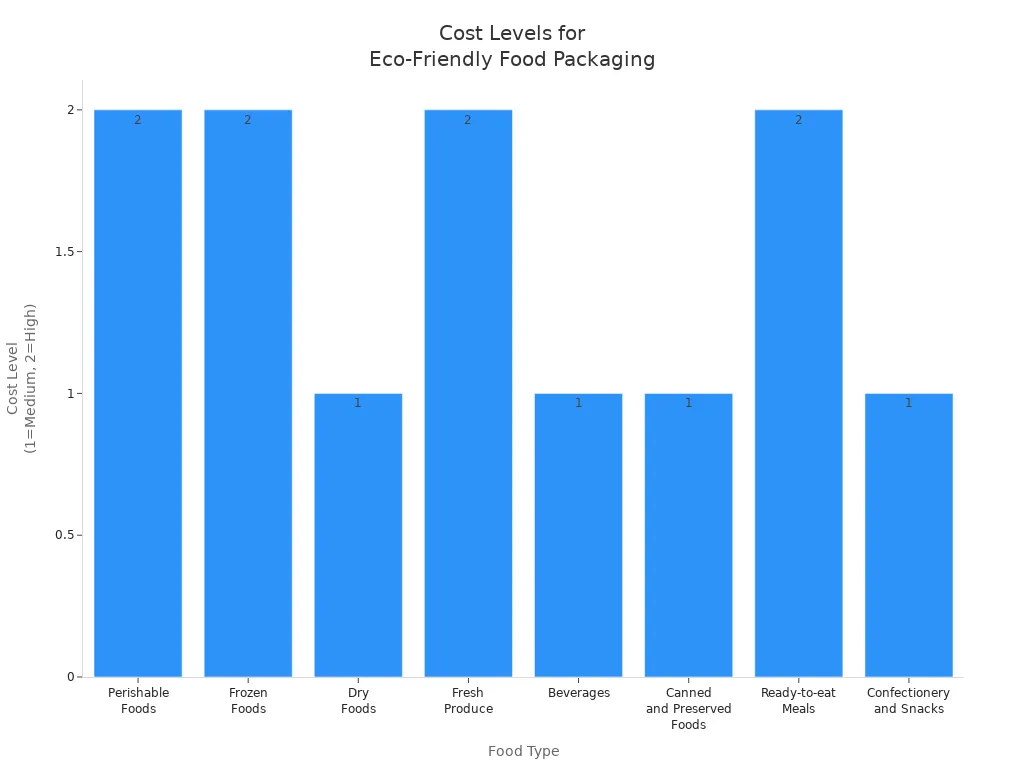
Jolly Chef makes bulk ordering easy. You get fast shipping from a US-based warehouse, so you avoid long waits and supply chain headaches. Many customers say they love the convenience and cost savings of ordering in bulk.
Disposal and End-of-Life
You want packaging options that are easy to dispose of and don’t harm the environment. Compostable plates and bowls go in municipal compost bins and turn into soil. Paper and cardboard can be recycled. Some biodegradable items dissolve in water or break down in regular trash. Always check local rules to make sure you and your customers dispose of packaging the right way.
|
Packaging Material |
Disposal Option |
|---|---|
|
Compostable (corn, bamboo) |
Compost bin |
|
Paper, cardboard |
Recycling stream |
|
Biodegradable packing peanuts |
Compost or dissolve in water |
|
Organic fabrics |
Compost or reuse |
Tip: Clear disposal instructions on your packaging help customers do the right thing.
Certifications
Certifications show your packaging meets strict standards. Look for labels like BPI, EN13432, or OK Compost. These prove your packaging breaks down safely and quickly. Always ask suppliers for up-to-date certificates and lab reports. Jolly Chef’s compostable plates meet top standards, so you can trust their quality and safety.
-
BPI (USA)
-
EN13432 (EU)
-
OK Compost (TÜV Austria)
-
ISO 17088 (International)
Shelf Life
Compostable packaging usually lasts about 12 months if you store it in a cool, dry place. Too much heat or moisture can make it break down early. Don’t overstock more than you need for a year. This keeps your packaging strong and ready for use.
Customer Needs
Your customers want packaging options that match their values and make life easier. They look for products that are safe, durable, and easy to use. Many want microwave-safe, leak-proof, and sturdy packaging for big events or catering. Jolly Chef listens to customer feedback and offers bulk packs that save time and money. You can meet customer expectations and build loyalty by choosing the right packaging for your business.
Implementation Tips
Sourcing
You want bulk eco friendly food packaging that arrives on time and meets your standards. Start by choosing suppliers with a strong reputation for quality and reliability. Jolly Chef makes sourcing easy for businesses. You get fast shipping from a US-based warehouse, so you avoid delays and keep your supply chain moving. Bulk packs help you save money and simplify procurement. Look for products made from renewable materials like sugar cane pulp. These work well for catering, restaurants, and large events.
Tip: Order samples before making a big purchase. You can test durability and see how the packaging fits your menu.
Disposal Education
Your customers need clear instructions for disposing of packaging. If you use compostable plates or bowls, add simple labels that show where to toss them. Many people don’t know the difference between compostable and biodegradable. You can help by using icons or short messages on your packaging. This reduces confusion and keeps composting streams clean.
-
Use signs at events to guide guests.
-
Train your staff to answer questions about disposal.
-
Share tips on your website or social media.
A little education goes a long way. You build trust and make it easier for everyone to do the right thing.
Compliance
You must follow strict rules when you use bulk eco friendly food packaging. In 2025, many states ban polystyrene foam containers. California, Alaska, Massachusetts, Nevada, and Kentucky are phasing out these products. Vermont requires compostable produce stickers with food-grade adhesives. You need packaging that meets food safety standards and breaks down quickly in composting conditions.
Here’s a quick checklist for compliance:
|
Requirement |
What You Need to Do |
|---|---|
|
EN 13432 / ASTM D6400 Certification |
Use certified compostable packaging |
|
Food-grade safety |
Choose materials safe for direct food contact |
|
EPR laws (CA, OR) |
Report packaging use and follow guidelines |
|
Traceability |
Track supply chain and packaging sources |
Stay updated on new laws and treaties. The UN plastics treaty and state EPR laws mean more reporting and transparency. Jolly Chef’s products meet top standards, so you can order with confidence and avoid legal risks.
Ready to upgrade your food packaging in 2025? Here’s what you can do:
-
Review your current packaging and spot areas to improve.
-
Request samples of Jolly Chef’s compostable plates to test quality and fit.
-
Partner with trusted suppliers for bulk pricing and fast delivery.
-
Track results and adjust your choices for better savings and customer satisfaction.
Want expert advice or a custom quote? Reach out to Jolly Chef and see how easy eco friendly packaging can be for your business!
FAQ
What makes Jolly Chef’s compostable plates a smart choice for bulk orders?
You get strong, reliable plates made from 100% sugar cane pulp. They handle hot and cold foods. Bulk packs save you money and time. Fast shipping from a US warehouse keeps your supply chain running smoothly.
Can I use these plates for both casual and upscale events?
Yes! Jolly Chef’s compostable plates look clean and stylish. You can use them at picnics, weddings, or business events. They fit any setting and help you impress your guests or clients.
How do I dispose of compostable plates after an event?
Just place them in a compost bin. They break down into soil in industrial composting facilities. Always check local rules for composting. Clear disposal helps you keep your event eco-friendly and simple.
Are Jolly Chef’s plates safe for microwaves and freezers?
Absolutely! You can use these plates in the microwave for up to 30 seconds. They also work well in the freezer. This gives you flexibility for serving and storing food at any event.
How does bulk purchasing from Jolly Chef benefit my business?
Bulk orders lower your costs per plate. You get reliable delivery and easy restocking. This helps you plan big events or daily service without worrying about running out of supplies.


